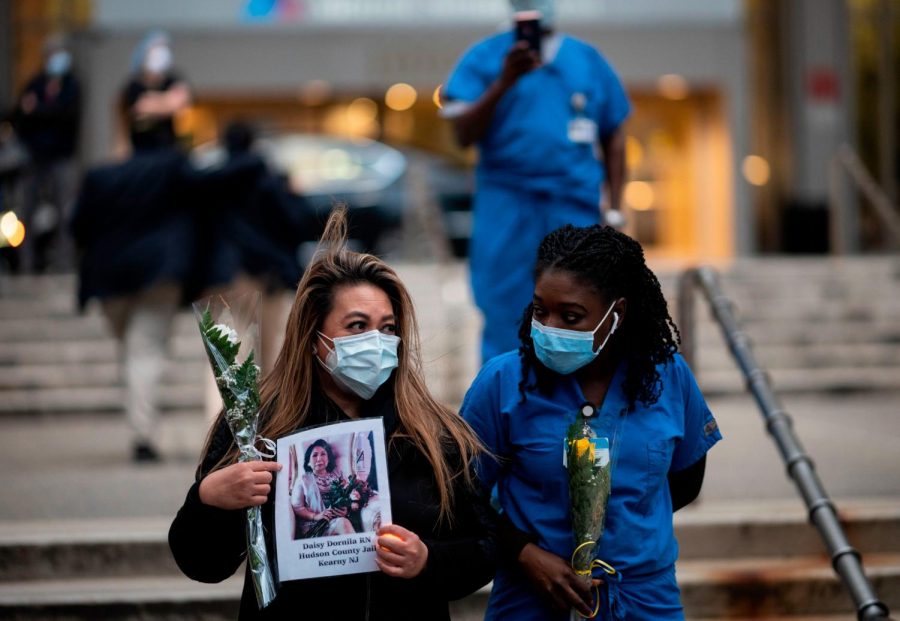U.S. Life Expectancy Drop Emphasizes Disproportionate Access to Healthcare
The U.S. has had the deadliest impacts from COVID-19 compared to other countries like Brazil and Mexico, which have also had a staggering amount of coronavirus cases. The U.S. has significantly higher numbers of deaths and total cases. This has not only affected the current public health crisis but has also had long-lasting effects on Americans. Specifically, the life expectancy for the average American has dropped by a full year. This reflects a failure to control the virus. Further data shows discrepancies among the treatment of different races and ethnicities in accordance with the coronavirus.
On Feb. 18, the National Center of Health Statistics, a branch of the Centers for Disease Control and Prevention, published a report that the average U.S. life expectancy dropped by a year. This report covers only the first half of 2020. The life expectancy for the entire U.S. population dropped to 77.8 years. Jeff Lancashire, a spokesperson for the N.C.H.C, stated to NPR that coronavirus is most accountable for this drop. “[Drug overdoses] are likely contributing here as well, but we don’t know to what degree. COVID-19 is responsible for an estimated 2/3 of all excess deaths in 2020, and excess deaths are driving the decline,” Lancashire wrote.
This drop in life expectancy also shows how different races are treated within the American healthcare system. While the life expectancy report that the CDC released reflects the average American, there was a more significant drop for Black Americans in comparison to white Americans. Between 2019 and the first half of 2020, the life expectancy for Black people dropped by 2.7 years from 74.7 to 72 years. The life expectancy for Hispanic individuals dropped by 1.9 years.
This is the lowest the life expectancy for Black people has been since 2001. There is now a six-year gap between Black and white Americans’ life expectancies. This inconceivable gap reflects the disproportionate effects of the coronavirus on the Black population in comparison to the white population.
Black Americans are also hospitalized more than white people due to COVID-19. According to CDC data, Black Americans are hospitalized with coronavirus at 2.9 times the rate of white Americans. Additionally, Black Americans die at 1.9 times the rate.
While these alarming rates have been published in various sources, little has been done to aid the Black community amid this pandemic. Black people are also receiving the vaccine at a notably slower rate than white people. In 16 states that have released their vaccination data by race, white residents are receiving the vaccines at about two to three times the rate of Black residents. For example, in Pennsylvania only 0.3% of Black residents have received the vaccine compared to the 1.2% of white residents who have received the vaccine. This seems to be the homogeneous pattern across many U.S. states, like Mississippi, Maryland and North Carolina, which have had many Black people die of COVID-19. However, many coalitions and community organizations have arisen to address this issue, as well as why Black people may feel hesitant to receive the vaccine.
Florida is having a difficult time distributing the vaccine given the vaccine’s imminent expiration dates. A coalition of Black community leaders formed the Florida Statewide COVID-19 Vaccine Community Engagement Task Force, and their goal is to have 70% of the state’s minority population get the vaccination. They aim to help a community that has been historically medically underserved.
While the CDC report on life expectancy is alarming, it might not accurately reflect the current situation at hand. The report only reflects the first half of 2020, and the pandemic has gotten progressively worse since then, with peaks in November and December and the largest spike in January. Underserved minority communities likely aren’t shocked, having faced years of struggle by not receiving the same medical attention as white people.
White House officials announced on Feb. 17 that the Biden administration will be spending $650 million to increase testing in underserved communities. It specifically noted places like K-8 schools and congregate settings like homeless shelters. It also announced that $815 million will be spent to increase domestic production of COVID-19 testing supplies.
The Biden administration is taking steps to address this issue, but state governments should work to make sure that their Black and Latinx communities are receiving the vaccine at the same rate as white people. There must be more groups or task forces like the Florida Statewide COVID-19 Vaccine Community Engagement Task Force to address the issue alongside the federal government.
Our leaders must work to protect minorities and improve access to healthcare while spreading more information about healthcare and the vaccine. The CDC’s data shows that the virus is hurting and killing Black people at a disproportionate rate, yet the government is not providing much help to improve this issue. There should be specific infrastructures put in place to halt the continuation of data like this. More than 500,000 people have died in the United States because of the coronavirus. Almost a year into the pandemic, there is still not enough being done at the government level.
Ally Dugan, FCRH ’23, is a communications and culture major from West Chester, Penn.








































































































































































































